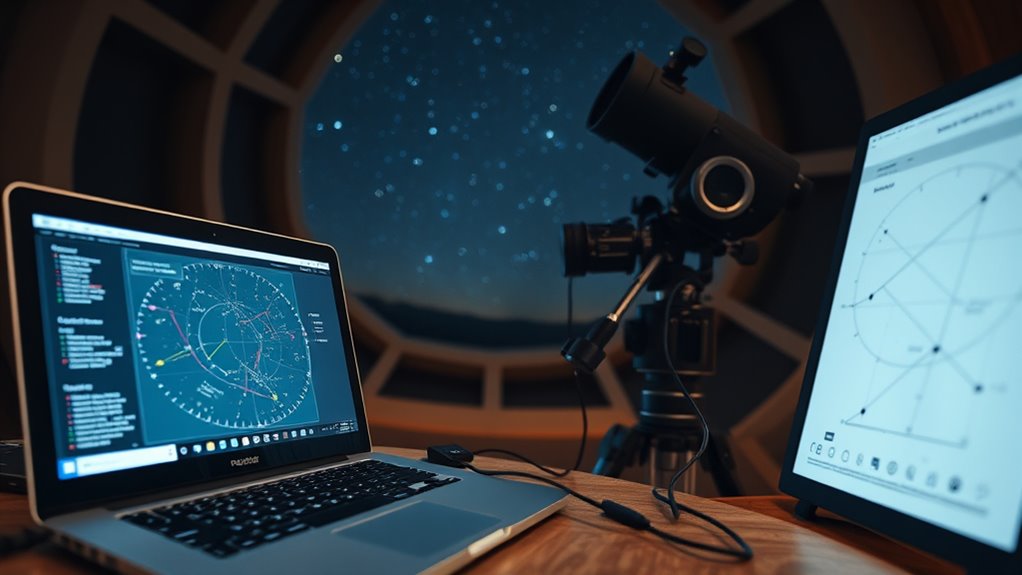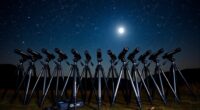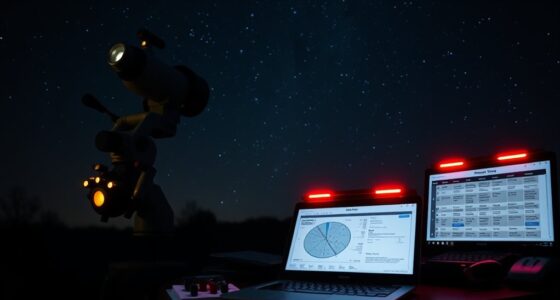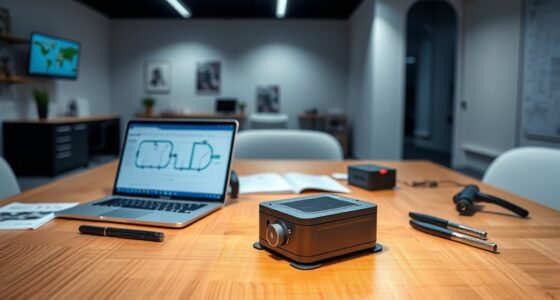When planning and troubleshooting your meridian flip, check for mechanical issues like loose gears or worn bearings, and guarantee your mount is precisely calibrated. Schedule flips during ideal conditions, avoiding zenith crossings, and verify camera and filter wheel alignment to prevent image shifts. Keep your software updated and confirm automation commands are correct. Testing your procedures beforehand helps catch glitches early. For more tips to smooth your flip process, stay with us.
Key Takeaways
- Ensure accurate mount calibration and polar alignment to facilitate smooth, error-free flips.
- Schedule flips during optimal visibility, avoiding zenith crossings and ensuring adequate buffer time.
- Verify camera and filter wheel alignment for seamless imaging before and after flips.
- Keep automation software updated and confirm scripts trigger flips correctly to prevent timing issues.
- Conduct daylight or test flips regularly to identify and troubleshoot mechanical or software problems early.
Common Causes of Mount Misbehavior During Meridian Flips
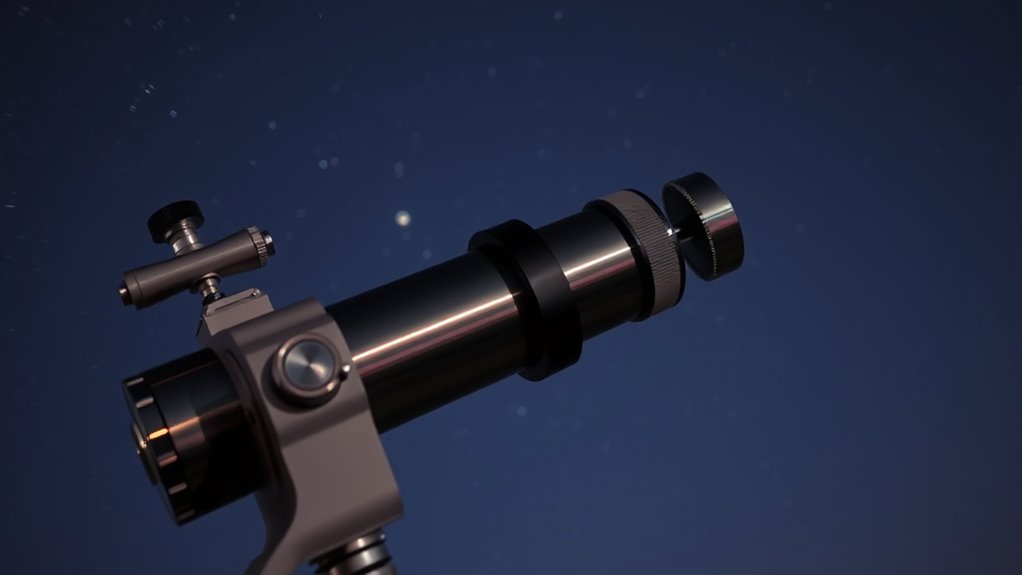
Mount misbehavior during meridian flips often stems from calibration issues or mechanical inconsistencies. If your polar alignment isn’t precise, the mount may struggle to transition seamlessly, causing jitter or stalls. Ensuring your polar alignment is spot-on helps the mount accurately track across the flip point. Power stability also plays a vital role; fluctuations or interruptions can disrupt the mount’s motors during the flip, leading to misalignment or jitter. Always use a reliable power source and consider a backup battery if needed. Additionally, mechanical issues like loose gears or worn bearings can contribute to instability. Regularly checking and maintaining your mount’s mechanical parts helps prevent unexpected problems during flips. Proper calibration, stable power, and mechanical upkeep are key to smooth, trouble-free meridian flips. Maintaining mechanical integrity through routine checks ensures long-term performance and reduces the risk of flip-related issues.
Timing and Scheduling Issues for Seamless Flips
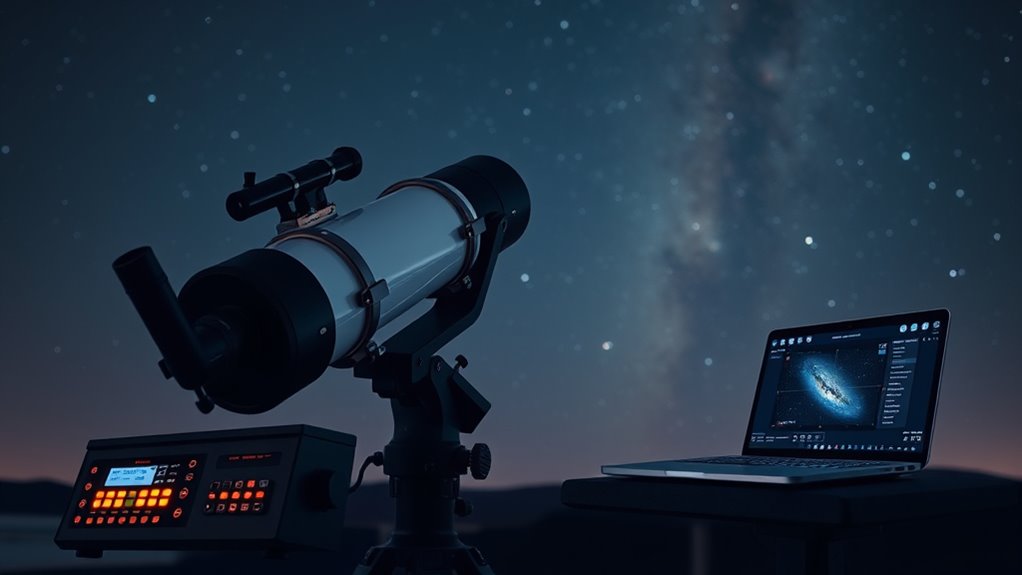
Proper timing and scheduling are essential to guarantee a smooth meridian flip. To achieve this, ensure your mount calibration is accurate, as misalignments can cause delays or errors during the flip. Adjust your tracking to maintain precise star positioning, reducing the risk of miscommunication between your mount and control software. Consider these key steps:
Accurate calibration and precise tracking are vital for smooth, error-free meridian flips.
- Schedule flips during periods of ideal visibility, avoiding times when the target is near the zenith or just crossing the meridian.
- Use software that automatically calculates the best flip time based on your mount’s calibration and tracking performance.
- Allow buffer time before and after the flip to account for any tracking adjustments needed, ensuring seamless continuation of imaging.
- Regularly review and mount calibration to maintain optimal alignment and synchronization for successful flips.
Following these tips enhances timing accuracy and minimizes disruptions during flips.
Camera and Filter Wheel Alignment Challenges
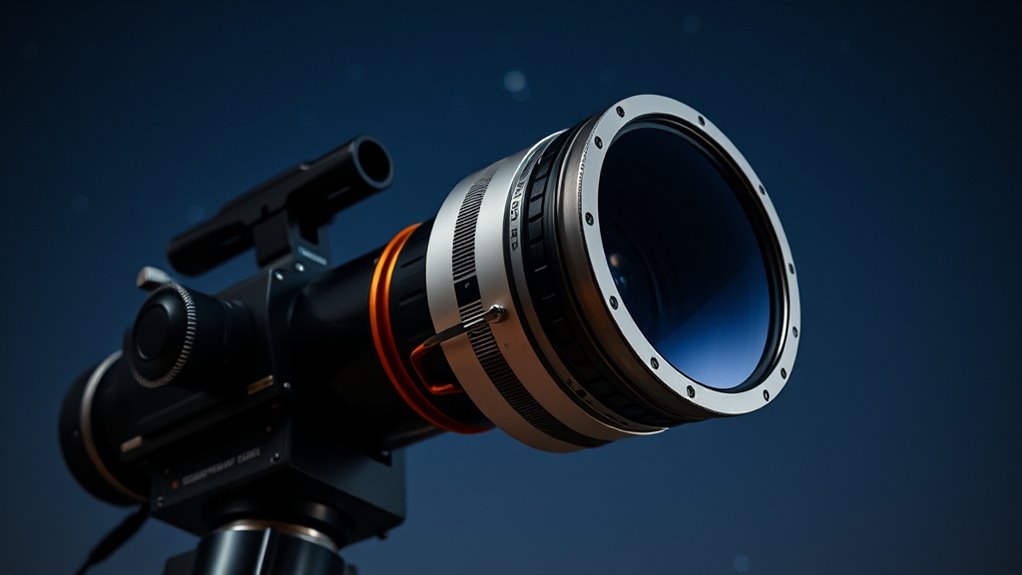
Accurate alignment of your camera and filter wheel is essential for smooth imaging sessions, especially during meridian flips. Misalignment can cause focusing issues, image shift, or even damage to your equipment. To prevent this, verify your mount is properly calibrated through precise polar alignment, which establishes accurate celestial tracking. Once your mount is well-calibrated, check that your camera and filter wheel are securely mounted and properly aligned with the optical axis. Regularly confirm that the filter wheel rotates smoothly and that the camera is centered in the field of view. Proper mount calibration minimizes drift during tracking, reducing the likelihood of misalignment during flips. Maintaining these alignments helps guarantee seamless transitions, sharp images, and avoids unnecessary troubleshooting during your imaging sessions. Additionally, performing regular equipment maintenance ensures all components remain in optimal condition for consistent performance.
Software Configuration and Automation Troubleshooting
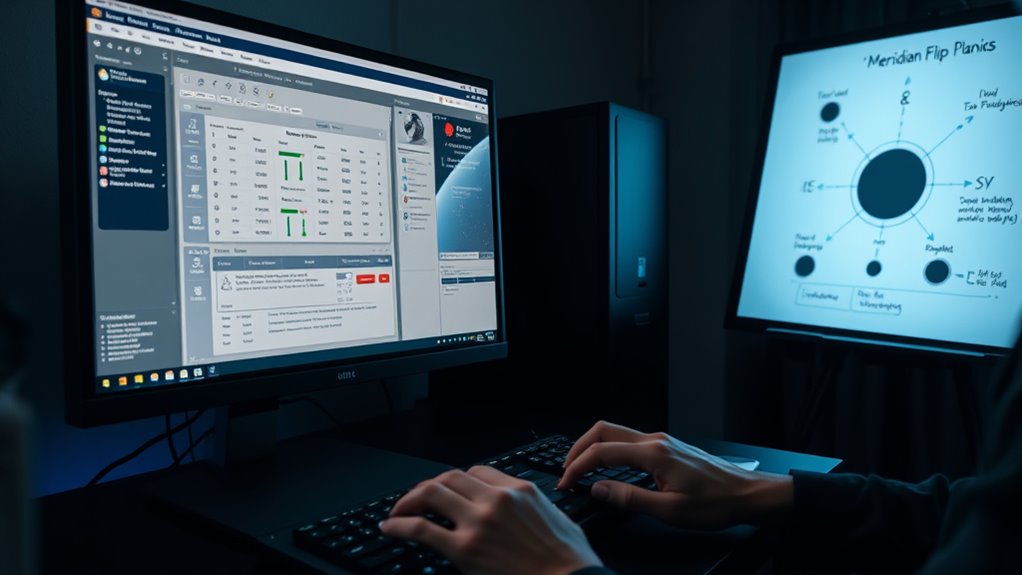
Software configuration and automation issues are common causes of meridian flip problems, often resulting from incorrect settings or software conflicts. To troubleshoot effectively, start by verifying your mount calibration, ensuring it’s accurate for precise positioning. Next, check that all software updates are current, as outdated software can cause incompatibilities and miscommunications during automation. Finally, review your automation scripts or settings, confirming they correctly trigger the flip at the right time and coordinate properly with your mount and camera. Consider the following steps:
- Confirm proper mount calibration to prevent misaligned flips.
- Keep all software up to date to avoid conflicts.
- Validate automation settings for correct trigger points and command sequences.
Additionally, consider utilizing passive voice detection tools to identify and correct passive constructions in your scripts for clearer automation commands. Addressing these areas helps resolve most common software-related meridian flip issues efficiently.
Best Practices for Testing and Verifying Flip Procedures
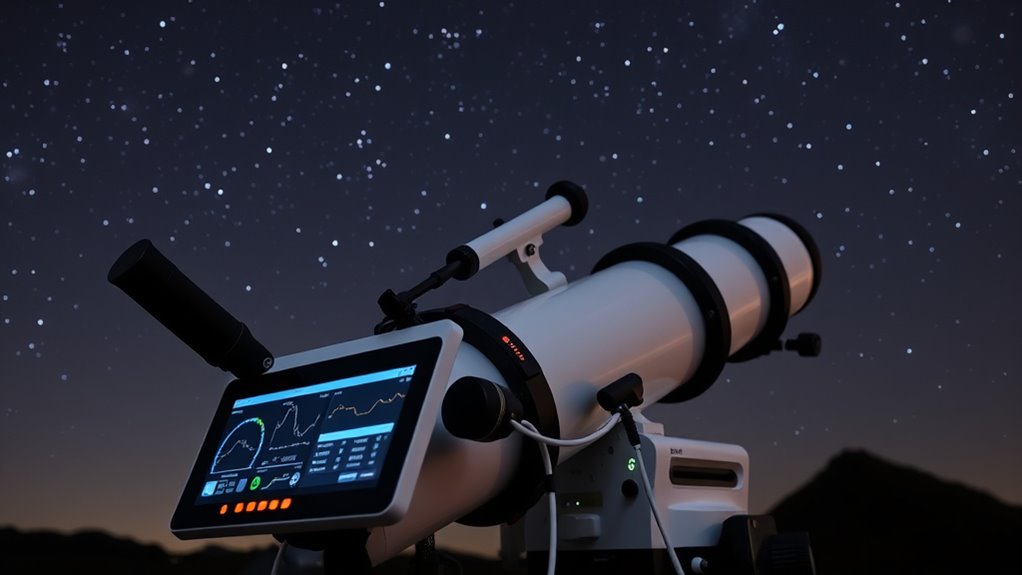
To guarantee your meridian flip works smoothly, it’s crucial to thoroughly test and verify the procedure before relying on it during actual imaging sessions. Start by confirming calibration consistency across your equipment to ensure accurate pointing and tracking post-flip. Run multiple test flips during daylight or non-critical sessions, observing how your mount and camera respond. Check hardware compatibility, making sure all components communicate correctly and respond as expected. Document each step and note any anomalies, such as missed slews or incorrect camera orientations. Adjust settings accordingly, and repeat tests until the flip occurs seamlessly. This process minimizes surprises during imaging, improves reliability, and guarantees that your setup maintains calibration integrity throughout the session. Additionally, regularly reviewing your relationship with your equipment can help identify potential issues early, ensuring smoother operations over time.
Frequently Asked Questions
How Can I Prevent Backlash From Affecting Meridian Flip Accuracy?
To prevent backlash from affecting your meridian flip accuracy, start by guaranteeing your gear calibration is precise. Use backlash compensation settings in your mount’s software to account for gear slack, which minimizes positional errors during flips. Regularly check and tighten gears, and perform calibration routines before imaging sessions. These steps help maintain accurate tracking and ensure the meridian flip occurs smoothly without backlash interference.
What Are the Signs of a Failing Mount During Flip Operations?
If your mount shows signs of failing during flips, it’s likely due to calibration issues or poor cable management. You might notice jittery movements, unexpected pauses, or inconsistent tracking. To prevent this, regularly calibrate your mount and verify cables are neatly managed, avoiding tension or pinched wires that can disrupt signals. These steps help maintain smooth, accurate flips and prevent potential failures during your astrophotography sessions.
How Does Weather Impact Meridian Flip Procedures?
Weather substantially impacts meridian flip procedures. Cloud cover can obscure your target, causing delays or failed captures, while high humidity levels can lead to dew on your equipment, affecting sensor performance. You should monitor weather forecasts closely and prepare for possible interruptions. Using dew heaters and ensuring clear skies can help minimize issues, keeping your meridian flips smooth and successful, even in challenging weather conditions.
Can Hardware Upgrades Improve Flip Reliability?
Hardware upgrades and firmware updates can greatly improve your meridian flip reliability. Upgrading your mount’s hardware guarantees smoother, more precise movements, reducing errors during flips. Additionally, installing the latest firmware updates fixes bugs and enhances compatibility with new technology, leading to more consistent flips. Staying current with both hardware and firmware ensures your equipment operates at its best, minimizing delays or failures during your imaging sessions.
What Troubleshooting Steps if the Mount Stalls During Flip?
If your mount stalls during a flip, start by checking your mount calibration to guarantee it’s accurate, which can prevent stalls. Next, verify that your firmware is up-to-date, as updates often include bug fixes and performance improvements. If the problem persists, restart your mount and software, and review your flip procedure for any misalignments. These steps help maintain smooth flips and prevent stalls during the process.
Conclusion
So, now that you’re a meridian flip maestro, remember—if your mount decides to throw a tantrum, it’s probably just jealous of your newfound expertise. Keep testing, double-check your settings, and don’t forget to blame the software—because, let’s face it, it’s always the culprit. With a little patience and a pinch of sarcasm, you’ll have seamless flips and stellar images in no time. Happy flipping!
